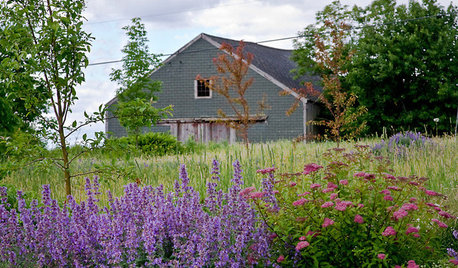2 ACRE expansion, tilling & succession planting
gardenlover
18 years ago
Related Stories

HOUZZ TOURSWe Can Dream: An Expansive Tennessee Farmhouse on 750 Acres
Wood painstakingly reclaimed from old barns helps an 1800s farmhouse retain its history
Full Story
GARDENING AND LANDSCAPINGLandscape Tour: Two Acres of Rural Hillside in Maine
An orchard of crab apples, a grove of sugar maples, even a hayfield ... pastoral landscape beauty doesn't get more idyllic than this
Full Story
HOUZZ TOURSHouzz Tour: From Overgrown Weeds to Picturesque Farmhouse Expanse
This once-neglected 100-acre South Carolina site now features a lake, a wood-filled farmhouse and a far-reaching view
Full Story
ARCHITECTUREHave It Your Way — What Makes Architecture Successful
Universal appeal doesn't exist in design. The real beauty of any home lies in individualization and imagination
Full Story
HOUZZ TOURSMy Houzz: A Midcentury Gem on a Wooded Acre in Dallas
Vintage colors and iconic furniture from the '60s pay tribute to this Texas home's postwar roots
Full Story
GARDENING FOR BUTTERFLIES3 Ways Native Plants Make Gardening So Much Better
You probably know about the lower maintenance. But native plants' other benefits go far beyond a little less watering and weeding
Full Story
GARDENING GUIDESInvite Mining Bees to Your Garden by Planting Their Favorite Plants
Look for mining bees (Andrena) pollinating woodland wildflowers in U.S. gardens this spring
Full Story
INSPIRING GARDENSNative Plants Bring 10 Southern California Front-Yard Gardens to Life
Rare plants, rain gardens and wildlife habitats are just a few of the features showcased on the 2016 Theodore Payne Native Plant Garden Tour
Full Story
BOOKSBooks: Tom Kundig's Houses 2
Expansive new release captures Seattle architect's beautiful, highly-crafted, often kinetic home designs
Full Story
GARDENING GUIDESGreat Garden Combo: 3 Wonderful Plants for a Deer-Resistant Screen
Protect your privacy and keep deer at bay with a planting trio that turns a problem garden area into a highlight
Full StorySponsored






flowerfarmer
anniew
Related Professionals
Edmond Landscape Architects & Landscape Designers · Arnold Landscape Architects & Landscape Designers · Arlington Landscape Contractors · Tempe Landscape Contractors · Bound Brook Landscape Contractors · Canton Landscape Contractors · Dunwoody Landscape Contractors · Hampton Bays Landscape Contractors · Medford Landscape Contractors · North Haven Landscape Contractors · Ringwood Landscape Contractors · St. Louis Landscape Contractors · Weymouth Landscape Contractors · Antioch Landscape Contractors · North Bellport Outdoor Lighting & Audio Visual SystemsgardenloverOriginal Author
flowerfarmer
gardenloverOriginal Author
flowerfarmer
gardenloverOriginal Author
flowerfarmer
newaukumvalley
gardenloverOriginal Author